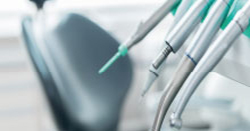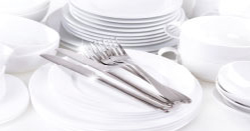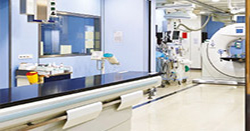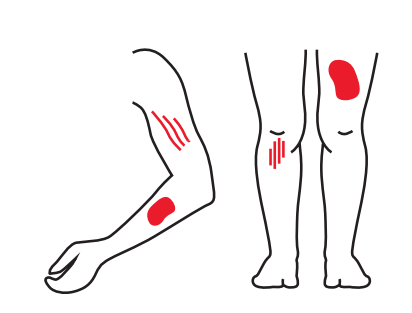Home > Products > Wound Care Products > Actolind w Gel
ACTOLIND® w GEL
THE OPTIMUM COMBINATION OF REFERANCE AND SMART MOLECULES FOR WOUND CARE
A Synergistic Approach in Wound Care with
Polyhexanide + Poloxamer
- Cleansing, moistening and decontamination of wounds
- Convenient and painless cleaning
- Removes scabs, necrotic tissues and biofilm layers from wounds effectively
- Does not inhibit granulation or epithelialization
- Suitable for antiseptic cleansing, softening and removal of encrusted dressing materials without causing a secondary trauma
- Highly effective against multidrug-resistant organisms (MRSA, VRE) and mycotic pathogens (C. albicans)
- Dermatologically tested and rated as “excellent”
- Biocompatible
- Well tolerated
Properties
Actolind® w Gel is a product used for mechanical cleaning, decontamination and moisteining of the chronic and infected wounds as well as 1st and 2nd degree burns together with medical devices such as bandage, dressing, pad and wound fillers.
Actolind® w Gel cleanses, moisturizes and disconnects the wound surface from outer environment by forming a protective film layer. It fills the space between dressing and wound surface and helps the healing process get shorter by keeping the wound stable.
This product is a Class III Medical Device according to the Medical Device Directive 93/42/EEC
Chemical composition
Poloxamer, Polyhexamethylene biguanide (Polyhexanide, 0.1%) water and auxilary subtances
Indications:
- Infected or uninfected acute wounds (e.g. traumatic wounds that occur as the result of cuts, tears, excoriation, crushing, being bitten, being stung or surgical wounds)
- Infected or uninfected chronic wounds (diabetic ulcers, venous ulcers, decubitus (pressure sore), etc.)
- Infected or uninfected thermal or chemical wounds (1st and 2nd degree burns, chemical burns, wounds that caused by electrical current, radiation wounds etc.)
- Entry regions of urological catheters
- Maintenance of peristomal skin, fistulas and abscesses, wound surface prior to dressing, suitable for antiseptic cleansing, softening and removal of dressing materials, i.e. bandages, dressings, pads and wound fillers that are dried, contaminated and adhered to the wound.
Method of Use:
Actolind® w Gel can be applied in combination with Actolind® w Solution. The wound should be cleaned with Actolind® w Solution before the application of Actolind® w Gel to remove the contaminants and deposits.
The wound bed should be covered with a plenty of gel prior to the application of dressings and bandages.
Actolind® w Gel does not inhibit granulation or epithelialization.
It has neither irritating nor pain giving properties. It causes no sensitization and can be used safely for a long time.
Actolind® w Gel can stay on the wound surface until the next dressing change. Thus, Actolind® w Gel keeps the wound surface constantly humid and minimizes the adhesion of the dressing on the wound surface by preventing of drying out.
Actolind® w Gel is effective against multidrug-resistant (MRSA, VRE) and mycotic pathogens. It is also well tolerated by allergics and diabetics. The protective film layer, formed by
Actolind® w Gel, can be easily removed from the wound surface during the next dressing change. For this purpose, Actolind® w Solution is recommended. This application should be repeated on a regular basis to remove the dead tissues and scabs during the healing process.
Usage:
Actolind® w Gel can be applied directly onto the wound as well as onto the bandage and gauzes. Materials such as bandage, gauze, wiping clothes, etc. should not be used again.
The opened product should be used on one single patient to avoid the risk of any contamination.
The entire wound and its surroundings should be thoroughly cleaned with Actolind® w Solution to minimize the risk of transmission of contaminants and microorganisms to the wound surface. For optimal wound cleaning, it is recommended to wet the wound, consisting of deep and intensively necrotic tissues, for at least 10-15 min. with the help of a fully wetted compress (application of wet dressing).
Do not dilute the solution! The cleaned wound should be covered with Actolind® w Gel and bandaged properly.
Do not use Actolind® w Gel in the following cases:
- In hyaline cartilage and aseptic joint surgeries, in the middle and internal ear and in the eye (If Actolind® w Gel contacts the aseptic cartilage, wash immediately with Ringer solution or physiological saline solution)
- In case of hypersensitive to any of the ingredients
- On central nervous system or meninx
- Along with anionic surfactants, cleansing soaps, creams, oils, enzymes, etc. (These substances should be removed fully from the wound surface before use)
Packaging
| Unit | Packaging Unit | Packaging Type | Article-No. |
|---|---|---|---|
| 5 ml | 100 x 5 strip | Monodose Strip | 06.6803.05 |
| 10 ml | 50 x 5 strip | Monodose Strip | 06.6803.10 |
| 30 ml | 240 | Tube | 06.6803.50 |
| 40 ml | 200 | Tube | 06.6803.100 |
| 50 ml | 200 | Tube | 06.6803.250 |
| 100 ml | 200 | Tube | 06.6803.350 |


















